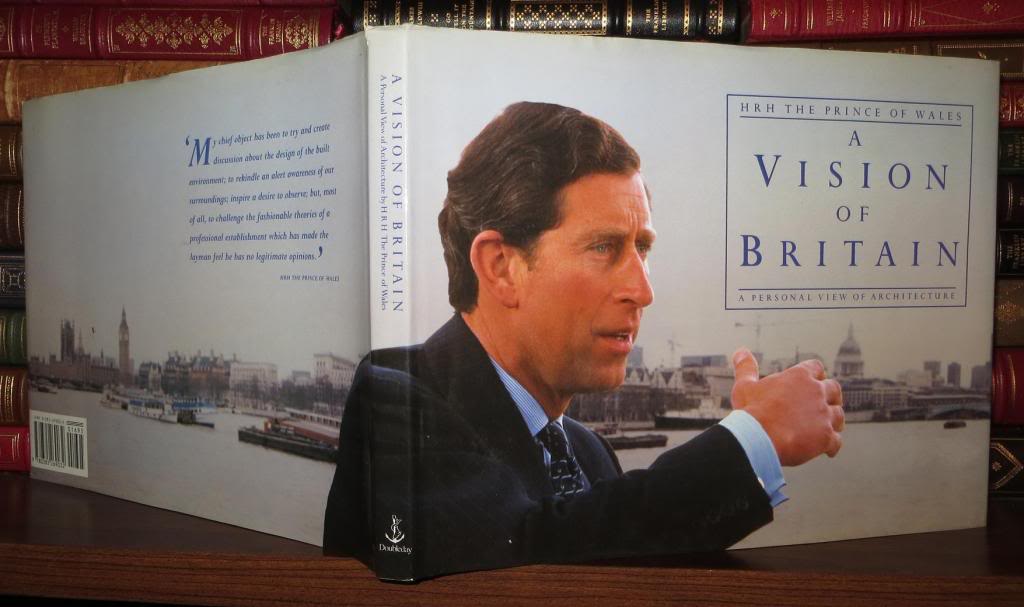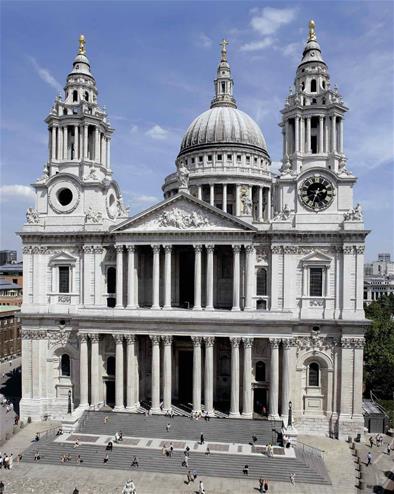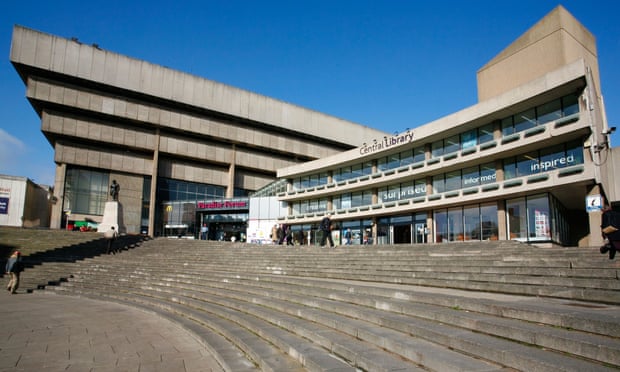A Vision of Britain by H.R.H. The Prince of Wales
'My chief object has been to try and create discussion about the design of the built environment; to rekindle an alert awareness of our surroundings; inspire a desire to observe; but, most of all, to challenge the fashionable theories of a professional establishment which has made the layman feel he has no legitimate opinions.'
Introduction
It is rare to find such an eloquent and succinct analysis of Britain's architectural and cultural decline coming from one who does not experience the daily assault of the "cult of ugliness" in their life (one would assume the life of a royal would be sheltered from such horrors). H.R.H. has somehow managed to understand the full complexity and detail of the problem without such experience and without a "professional" education on architecture. However such revelations should serve to grant immense honour upon a man who has fully understood the problem that faces the "layman" on a daily basis. "A Vision of Britain" perfectly targets the informal genesis of modernism and its influence on British architecture as well as being sympathetic to the impact this has had upon the national and individual spirit of its captives. To our further surprise, H.R.H. has also envisioned a future that departs from this "new orthodoxy" as well as personally battling for its realisation (Leon Krier's vision manifest at Poundbury). To all these achievements we owe an incredible debt of gratitude; that one man should have had the diligence to develop a full understanding of the issue, and that he should have been gracious enough to have put his profundity to the printed page.
Print and Publishing Quality
"A Vision of Britain" is available only in hardcover and for those willing to indulge in such luxury they will not be disappointed. There are NO typographical errors! The quality of the text is sublime and reads personably and efficiently. There are many visual aids to support the cases H.R.H. makes throughout the book which help to provide an all-encompassing illustration of his ideas. His own watercolours add a personal and impassioned touch and serve to engage the reader with the author's perspective. Everything about this work screams quality before an analysis of the content has even been made.
Our British Architectural Legacy
‘I will be accused yet again of living in the past; as if it were an abominable sin to respect, admire, cherish or seek inspiration from the richness of our heritage.’
H.R.H. devotes a considerable portion of this work to venerating British architects of the past and their immense impact upon our towns and cities. However, his praise is not isolated merely for the profoundly beautiful works of grand architecture. He similarly glorifies and acknowledges the unremarkable works of unnamed and unthanked civil architects of this nation's history. H.R.H. discovers untold treasures in countless towns and villages from Edinburgh to Truro, this serves to highlight the breadth and depth of our island's architectural legacy. Through reading this work one develops an appreciation for the constructional and decorative diversity present in all corners of the nation.
This diversity is built upon the foundations of our natural earthly bounty and the individual traditions of communities that implement their local resources for truly original styles and ideas. Truthfully no county is home to a singular architectural pattern. Whether built with granite, sandstone, brick, wood, or thatch our homes, schools, churches, and hospitals portray distinctive originality in comparison with 20th-century developments in design. Truthfully of our traditional buildings, it can be said that no two houses are the same.
A Tattered and Lifeless Legacy
‘Some time during this century something went wrong. For various complicated reasons, we allowed terrible damage to be inflicted on parts of this country’s unique landscape and townscape.’
The critical takeaway from "A Vision of Britain" should be that this decline was not an organic progression from within society but rather a systematic revolution that took place within professional architectural and educational spheres.
‘Architects deliberately staged a revolution within their own organisation and their own system of education.’
H.R.H. draws repeated attention to the effects of this dramatic change. Once beautiful buildings stood in harmony with both the natural environment and with the buildings surrounding them. Overall attention to scale was forgotten in the modern period which disastrously ruined the beauty of our towns and cities. The increasing desire to use inorganic materials in construction has led to lifeless alien growths sprouting from the soil to the rapturous applause of the professional architectural body. Indeed their modus operandi appears to involve eternal conformance to every current trend no matter how worthless its value.
‘Many architects and developers believe that architecture should reflect the spirit of the age - whatever that might be!’
However, no critical evaluation of the traditions to which our culture became accustomed was ever performed. H.R.H. much like most Britons is not averse to change or reform but indeed their revolution never depended on good intentions or reasonable reform. Rather the desire was to destroy the link to tradition, to see its lessons as archaic and dangerous to the future of our nation's destiny.
‘The past, apparently, is largely irrelevant in this scheme of things, and its meaning and lessons must be obliterated.’
H.R.H. recognises that what is lost in this process is not merely the architectural or artistic merits of our culture but instead the foundations of our culture altogether. A sinister reality is now bestowed upon a powerless public, they are forced to consent to cultural suicide. The lifeless buildings and ugliness in the scale of our towns and cities serve to oppress the more noble sensibilities in us all. Indeed we all suffer as a result of the rejection of traditional principles of design.
‘I believe that when a man loses contact with the past he loses his soul.’
‘If we abandon the traditional principles upon which architecture was based for 2,500 years or more, then our civilisation suffers.’
For those of us who protest these radical changes, we will face the price of opposing a corrupted establishment, labelled as a "romantic" or some other dismissive pejorative. Yet within even the lowliest of our culture, visceral hatred of this phenomenon has arisen. Communities all across the country are left miserable by this forced march from tradition and worse still many are powerless to resist it.
‘Deep down in our subconscious an uneasy feeling persists that there is something missing if we sacrifice ourselves on the altar of progress, and live and work in buildings which only reflect the technology of the moment.’
Notices of planning permission are met with silent disdain and many are dissatisfied by any desire to build for fear of ruining their beloved streets and homes. However, a solution lies within our instinctive protestations and its source is with our collective appreciation for truly beautiful works.
‘We all need beauty. We can’t live without it - as we’ve all discovered to our communal cost.’
This innate response to the world around us must be harnessed and galvanised into communal action against the "cult of ugliness". Inasmuch as the official methods of resistance are ineffectual they must be pursued by those of us who care enough to see our communities flourish. Do not be fearful about challenging ugly construction much less submitting to the whims of hawkish development companies and do not be afraid of responding with impassioned cries for beauty in the places we call home.
‘We should therefore no longer be nervous about “aesthetic” questions, and no longer anxious about applying “aesthetic” judgements.’
The Ten Principles of Architecture
H.R.H. has outlined ten pragmatic principles to follow in future architectural and planning projects. These serve as a series of guidelines to help involve our long-standing historical tradition in new developments:
- The Place: Respect the land and location.
- Hierarchy: Which buildings require which sizes in accordance with their importance.
- Scale: Buildings must relate to human proportions and their role in the community.
- Harmony: Buildings must aesthetically work with each other even if they use different styles.
- Enclosure: Fewer entrances make a building seem an enclosed space.
- Materials: Use local building materials to make constructions that appear to be organic.
- Decoration: Add decorative patterns and details to core structural units.
- Art: Artists and architects must work together again. Art pieces must work with buildings.
- Signs and Lights: Tasteful signs and lights that aesthetically contribute to the building overall.
- Community: Involve the community in decisions on developments in their community.
Having a code or set of principles helps to maintain focus in the face of ever-changing styles and ideas. It is useful to implement any of these categories in order to criticise buildings or developments which we find viscerally disgusting and thus understand truly why they are ugly.
Conclusion: "A Vision of Britain"
‘Everywhere I go, I get a very strong impression that most people know the sort of buildings they like. They are the buildings that have grown out of our architectural tradition and that are in harmony with nature. These were the qualities that made our towns and cities such beautiful and civilised places in the past and, with God’s help and inspiration, they can do so again.’
H.R.H. reminds us that many of us feel the same way about this issue plaguing our civic spaces. Truthfully many of us recognise the "cult of ugliness" and their treachery but few of us are optimistic about the future of our nation's architecture. H.R.H.'s work in "A Vision of Britain" reminds us that there is indeed great hope in resisting these monstrous works on the local level. Furthermore, beauty itself has been granted unto man from divine authority and as such our supplications unto God will serve to bring aesthetic virtue to our new building projects once more.
‘Anyone can build in a thoroughly unimaginative way. The secret, I believe, lies in creating surroundings which people are attracted to because they have that elusive something extra - what we call character.’




Comments
Post a Comment